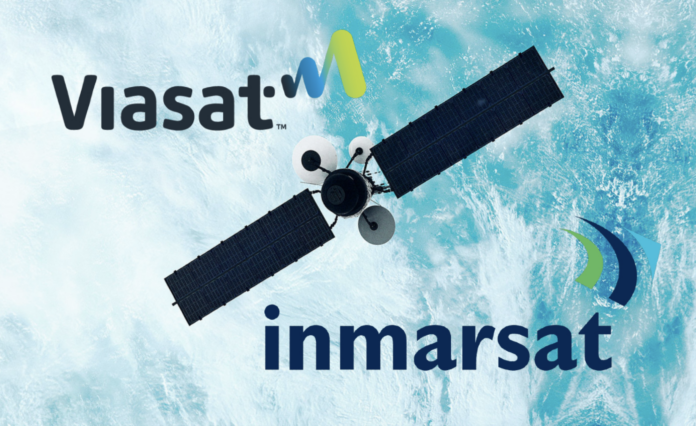US satellite broadband provider Viasat’s acquisition of UK-based counterpart Inmarsat for $7.3 billion has been given the green light by the European Commission. The approval follows clearance by the Competition & Markets Authority (CMA) in the UK on May 9, and by the Federal Communications Commission (FCC) in the US on May 19. The deal is expected to close by the end of May.
The deal will see the combined company integrate their spectrum, satellite, and terrestrial assets as a “global high-capacity hybrid space and terrestrial network”, supplying satellite-based broadband and narrowband services to commercial and government sectors. Global IoT services will remain a primary and developing market for Viasat’s expanded connectivity services, it said.
A previous CMA review had cautioned that a merger would “lead to airlines facing higher prices and worse quality on-board Wi-Fi”. CMA had raised concerns there is already-limited competition around supply of onboard Wi-Fi for passenger use, where the two are key players, and complexity for new players like Starlink and OneWeb in the market. But the EC approval, following final approval from CMA and FCC, means the deal will close.
Viasat has committed to expand highly skilled jobs in key areas and raise UK research and development spending by 30 percent. The purchase comprises $850 million in cash, to go to Inmarsat shareholders, plus $3.1 billion in shares (46.36 million shares) of Viasat common stock, and the assumption of $3.4 billion of net debt. Revenue and earnings will be “more diverse, resilient and global”, with potential for “mid-teens percentage revenue and profit growth”.
Viasat has a notable stake in the residential connectivity and aviation / defence markets in North America, and a reputation for “ultra-high-capacity satellite technology”. Inmarsat serves global mobility, government, IoT, and enterprise sectors, according to the press note. It currently provides “safety and connectivity services to more than one million mobility and defence platforms”, it said.
Inmarsat claims the “world’s most diverse portfolio” of mobile telecoms satellite networks, and a global spectrum portfolio at 1525-1646.5 covering the L-band, Ka-band and S-band. Its new ELERA satellite system, providing narrowband IoT connectivity in the L-band, was announced in August, to go live with aviation customers from 2022. It is being pitched as a “springboard for innovation… on land, at sea and in the air”.
The combined company will offer a broad portfolio of spectrum licences across the Ka-, L- and S-bands, and a fleet of 19 satellites, with 10 additional spacecraft under construction and scheduled for launch within the next three years. The Ka-band footprint is scheduled to also include polar coverage, to combine with L-band assets to support bandwidth-intensive applications requiring “all-weather… and highly reliable” narrowband and IoT.
Viasat’s capabilities – specifically, its “beamforming, end-user terminal, and payload technologies and its hybrid multi-orbit space-terrestrial networking capabilities” – will unlock greater value from Inmarsat’s L-band spectrum and existing space assets, it said. The new company will boast “technology and service offerings” from the former, and an extensive “technology, manufacturing and service distribution” from the latter.

